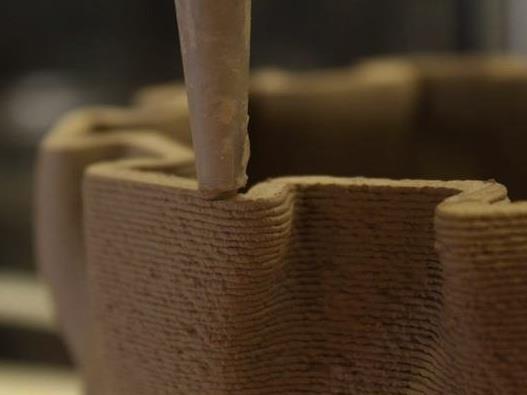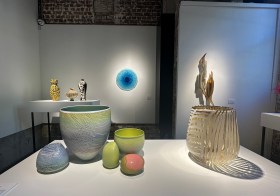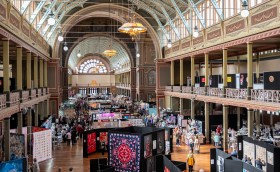Exchanging bricks for mud. Image via www.wasproject.it
Inspired by a creative insect, the mud dauber wasp, Italian 3D printing company World Advanced Saving Project (WASP) has developed a 3D printer called ‘Delta’ that builds houses using only materials found onsite such as mud.
The easily-transportable 3D printer was unveiled at the Rome Maker Fair in early October. While not a full scale model (which will measure six meters tall), it was equipped to produce smaller versions of the mud brick dwellings and serve as a proof-of-concept.
‘It takes weeks to print a real house, so we will print a smaller building because we only have two days. But the print, the mixture and materials have already been tested and they’re working,’ said founder Massimo Moretti.
WASP 3D printer ‘Delta’ at the Rome Marker fair
Natural materials such as mud found on site at zero cost, means that the back-to-the-future style dwellings could offer a low cost, sustainable solution to solve housing shortages across the globe.
The advancement of such technology is being seriously considered by architects, ‘It’s definitely real, it’s in its embryonic stages, but when you have a country like China building as many houses as they have to build they will embrace the technology and move it along,’ David Parken, chief executive of the Institute of Architects told The Australian Financial Review
For a low cost of approximately $5,172, a Chinese company called WinSun Decoration Design Engineering Co, impressively built ten basic houses in a day using a giant 3D printer and “ink” made from recycled waste, reports Architecture & Design .
But will such innovations and advancements in 3D printing have us heading down to Bunnings to get our hands on a 3D printer and propping up a new house over a weekend? Maybe not in this decade.
ArtsHub spoke to Dr James Gardiner, Lead of Design Innovation, Laing O’Rourke Australia, who doesn’t see 3D printing becoming a mainstream option for people building houses. ‘I’d see probably a niche application for this technology in Australia. I wouldn’t see it as something used on mass in Australia in the coming decade.’
Familiar with WASP’s recent efforts, Gardiner said he was impressed by the low environmental impact of the houses. ‘One of the interesting aspects that the WASP founders brought up is the use of abundant materials in a 3D printing context on a construction scale.
‘Choosing a material that doesn’t have this post processing prior to fabrication makes a big difference to the amount of carbon omitted.’
While Gardiner thinks WASP’s inclusion of local and natural materials is admirable, it is not without problems. The reduction in carbon and associated positives for the environment may be inherent in using locally-found materials, but structural integrity may be comprised.
‘The thing is with these [natural] materials is that they are much less processed, and much less homogeneous. So even within one batch to the next, you will have differences in the material properties which will lead to difficulties in assessing the structural capacity.
‘You may have to over-engineer the wall in order to be sure the variation in the materials they are experiencing can be accounted for,’ he said, ‘So it becomes a high maintenance type of building.’




